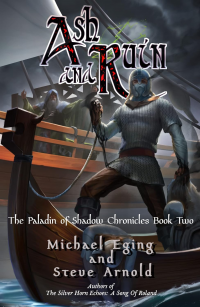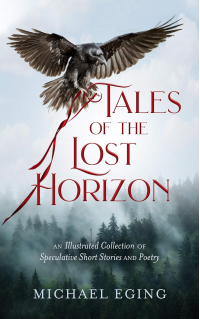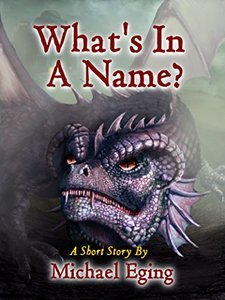Michael Eging Interview Published on: 02, Aug 2018
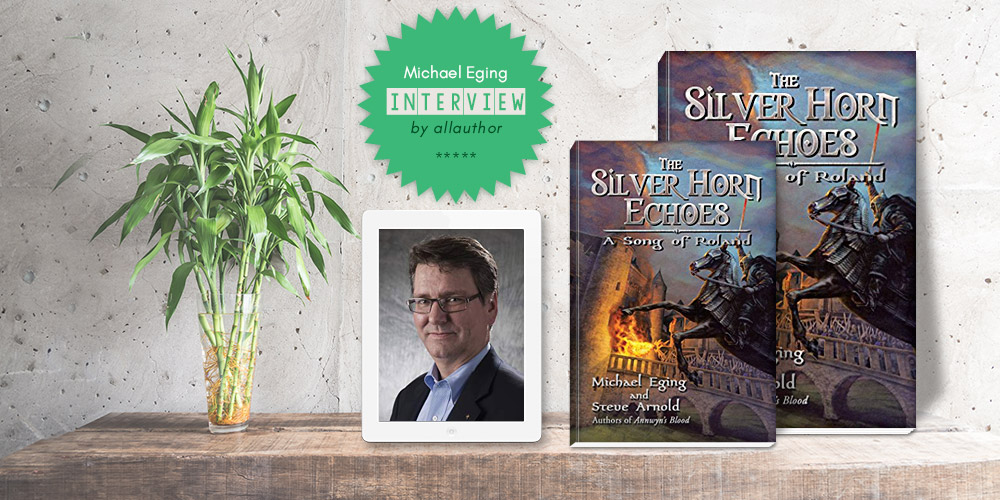 How long have you lived in Northern Virginia? What is it about Alaska that makes you want to visit?
How long have you lived in Northern Virginia? What is it about Alaska that makes you want to visit?
We have lived in Northern Virginia since 1993. I was going to graduate school at the University of Maryland at that time, and my wife was enduring a major commute from College Park, MD to Herndon, VA every day. So we moved around the D.C. beltway and I undertook the reverse commute.
Visiting Alaska has been something I’ve wanted to do for a very long time. I actually want to do it overland; driving in an old Land Rover 110 that I have been working on as a project. I love the outdoors and all things mechanical, so it is the best of all worlds to see a part of the world that has fascinated me for a very long time.
Do you still write on a typewriter? What medium of writing do you use most often (paper and pen, typewriter, computer, IPad, etc)?I don’t write on a typewriter anymore, and haven’t for a very long time. The last piece I wrote on a typewriter was in 1986 while I was in college. Now with computers, and very smart software, I am much more productive on a computer. However, I do have a pen and paper that I always keep close by. I will jot down notes, write paragraphs, outline, etc. on paper then transpose onto the computer.
When did you start writing screenplays and scripts and how does it differ from writing a novel?I began writing screenplays sometime in the mid 2000s. I was writing a fantasy story at the time, and after many months of work had hit a sort of writer’s block. I saw where the story was going and until that point had been very productive building the world and characters. Then suddenly, I just needed something else. So I began with a story that had been with me for a very long time. When I was in college, I outlined a screenplay with a focus on Roland, Champion of Charlemagne. That outline was not very refined, but from that came the first draft of a screenplay called The Silver Horn Echoes: A Song of Roland. I was fortunate to work with a topnotch editor in Los Angeles who drove me through rewrite after rewrite until I had something that I was very proud of. That screenplay became simply Song of Roland and was optioned to Alan Kaplan of Cine LA. After that, I began writing additional scripts such as Blood Money, a WWII thriller, Feast of St. Nicholas, a horror thriller, and The Prince, a political thriller.
Screenplay writing is very different, to me, than writing a novel. I start in often the same place with a concept. I then outline, much as I do when writing a novel. However, as I outline and begin to shape my work, the screenplay structure begins to play a role in determining the structure of the story, the flow, etc. Also, as I lay out the story, I am cognizant that the storytelling of a screenplay is done in collaboration with a director, actors, etc. So I have to balance their roles, develop intriguing characters that will attract the right talent, and hook them into the story. Giving them enough instructions through scene descriptions, action and story narrative, without directing the world building that will be done with a director and actor.
With a novel, I am the writer, the producer, the director, the lead actor or actress, and responsible for the entire world building in between. So I will work to hook the reader of the novel, and draw them into a fully formed world rather than relying on someone later on to deliver that.
As a Bestselling author, to what do you attribute most of your success?Steve (my co-author) and I really have focused on getting our book in front of readers in unique and standard ways. First, we try to take every opportunity to get in front of readers. A talented author named Jordan Raskin, who is well known in comic and graphic novel circles, created our cover. That beautiful cover has been well received, as has the novel, at comic and pop culture cons. We also participate in author events at bookstores, festivals, and community author events.
An important avenue for authors is getting the book in front of reviewers and bloggers. We spend a lot of time sending inquiries to bloggers and reviewers who may have an interest in the type of tales that I and my oft writing partner enjoy writing.
And finally, we have become marketers in our own right. We have learned a tremendous amount about getting our book in front of readers through targeted advertising, email lists and social media. Not every avenue is effective, but we are learning to focus where we generate the most interest. All of these areas are labor intensive for two authors, so we have also relied on my college age daughter, Gwen, who also ensures that inquiry letters are in the mail, new author events are identified, and that the scatter-brain authors are where they need to be when they are supposed to be there!
What was your inspiration for the Tales From The Lost Horizon series? How does the name of your book "What's In a Name" reflect the plot or message of the story?The Tales from the Lost Horizon series represents the release of short stories that I had written many years ago while a student in college; and as a young father who would tell these stories to my children. They remained on a hard drive for many years, and it is almost a rediscovery for me to revisit stories, characters and worlds that I had not thought about for many years.
“What’s in a Name” was a story that revolves around an elf trooper who finds himself on a most dangerous quest. He isn’t necessarily the most famous, or noble of characters. He rises as an officer during this quest through the deaths of commanders who are winnowed out by the dangers the unit faces in pursuit of the object of the quest. Yet, this lowly elf rises to the dangers and challenges, when those of nobility or worldly reputation are also tested by the same challenges. Of course, the story includes other aspects of the title, but I don’t want to give away too many spoilers!
How much importance do you place on book titles and covers?A title and cover can make or break a book. We all know the old adage, never judge a book by the cover, but that bit of sage wisdom isn’t the driver utilized by readers in the marketplace. Once the story is completed, the search for the right title and elements for the cover have already launched. For example, Steve Arnold and I are well into the sequel to Annwyn’s Blood, our Dark Ages fantasy/horror tale. With our experience developing The Silver Horn Echoes: A Song of Roland, we began the work on the title and laying out the concepts for the sequel. In addition, we are exploring new artwork for Annwyn’s Blood to develop a look that will more effectively capture the spirit of the book and the series.
How did you find out the ins and outs of royal life for your book "Annwyn's Blood"?I am a historian by training, having spent many years steeped in post-Roman, Dark Ages chronicles and documents. So we extrapolated from what we knew of that period to create a setting that felt authentic to Britain of that period. With the sequel to this book, we expand the world to a greater post-Roman world that will explore people and situations amid the ruins of empire; as well as the ashes of the rising Byzantine Empire in the Eastern Mediterranean.
What are some plans you have for future books in the The Paladin of Shadow Chronicles book series?We are currently well underway drafting the sequel, Sword of the Magnus, which picks up right after the events of Annwyn’s Blood. In this story, we see the repercussions of character decisions made throughout the original story; and we are introduced to a wider world of the Dark Ages. Of course, this being a fantasy/horror story, there will be plenty of mythical and fantastic threads woven throughout the ongoing tale.
When planning a series, what are some boundaries you first establish before you start writing?I write much differently by myself than I do with a writing partner. However, some of the preparation is similar. First, we explore the ending, or where we want to go. That gives us grounding for the tale as we begin to develop the key characters, the situations and the initial outline of the story. In that draft outline, we will explore problems, solutions, and each character’s journey throughout the story. Once we have this preliminary work done, we begin drafting. Both when I write by myself and with a writing partner, this is the time when the whole process becomes very interesting.
You see, as I write the chapters in that initial draft, the story begins to take on a very organic nature. Characters will sometimes say or do things that I didn’t plan for. Or take a completely different direction. When writing on my own, this is a simple dialogue with the author where adjustments are made and the story goes on. However, with a writing partner, such as with Annwyn’s Blood, such changes are negotiated, collaborative direction is adjusted to remain coordinated, and the characters continue on their journey. So communication in a collaborative writing situation is essential.
How does your character Roland in "The Silver Horn Echoes" reflect yourself and the challenges you have faced in your life?Oh, goodness, this was an insightful question. A significant theme in The Silver Horn Echoes is the loss of a parent or loved one. The young Roland wrestles with this in the opening pages of the novel and that propels him to walk in the footsteps of his father, William of Breton March. You see, in The Silver Horn Echoes, Roland feels tremendous guilt for not being at his father’s side when William passes. The relationship between son and father is pivotal to his development as the champion and hero that we want to see him become.
I wrote the first outlines for a screenplay telling this story while I was in college. At the time, I was dealing with the loss of my own father as I was studying thousands of miles away. When I realized how fragile his health through conversations with my mother, I took the earliest flight home to see him that I could find. My brother picked me up at the airport, and we raced to my family’s farm over an hour away. By the time we arrived, my father had died. Writing this story was cathartic and forced me to deal with my own loss and guilt. Thus the redemption that Roland finds at the end of the story is very poignant for me.
Who writes your book blurbs? What is your recipe for the perfect back-of-the-book blurb that's interesting and informative without giving too much away?As we began preparing to release our novels, we relied on “professional” marketers with the publishers. However, each time we were disappointed in content that really didn’t capture the essence of the story. On both my collaborative and solo projects, we now write our own blurbs and will often test them with other public affairs professionals that I have come to know throughout my career. It is a tremendous exercise in balance to offer just enough information to entice a reader without offering too much. But we keep working at it until we feel it is right.
Do you still carry around your old notebook full of story early ideas? Have any of those ideas carried onto your later published books?I still have them! But I don’t actively carry them around anymore. Thus far, the stories of my youth haven’t been incorporated into my work of today—but you never know. One day some of those ideas just might.
What have been some of the most helpful resources in your career as an author?Reading compelling novels, stories, plays, etc. has been the single most important resource for inspiring and helping me as an author. Close on the heels of that is working with a professional reader/editor who often challenges me to rewrite and not be afraid to spend time on polishing my work before it goes to print, or, in the case of screenplays, is shared with producers, directors, etc.
Michael Eging wanted to write since he was very young. Inspired by professors and visiting writers to BYU since high school, Michael is a historian by training. In his books, he is the writer, the producer, the director, the lead actor or actress, and responsible for the entire world building in between. Reading compelling novels, stories, plays, etc. has been the single most important resource for inspiring and helping him as an author. At the time, he was dealing with the loss of his own father, he wrote the first outlines for a screenplay while he was in college. Currently, Michael is drafting the sequel, Sword of the Magnus, which picks up right after the events of Annwyn’s Blood. He dreams of one day driving in his old Defender to Alaska with his kids and their dog, Marlin.
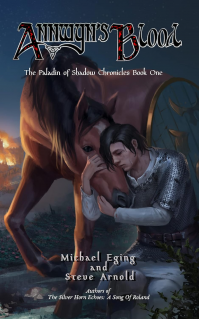 Annwyn's Blood (The Paladin of Shadow Chronicles Book 1)
Genre: Action & Adventure, Historical Fiction, Fantasy
Annwyn's Blood (The Paladin of Shadow Chronicles Book 1)
Genre: Action & Adventure, Historical Fiction, Fantasy
 The Silver Horn Echoes: A Song of Roland
Genre: Action & Adventure, Historical Fiction, Literary Fiction, Fantasy
The Silver Horn Echoes: A Song of Roland
Genre: Action & Adventure, Historical Fiction, Literary Fiction, Fantasy

